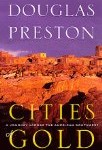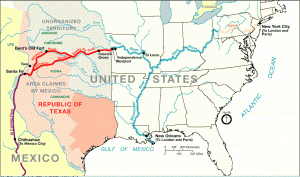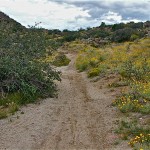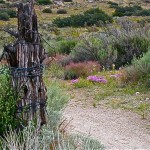Category Archives: Southwest
Great Albuquerque/Coronado History Read
 Cities of Gold
Cities of Gold
A Journey Across the American Southwest in Pursuit of Coronado
Douglas Preston, 1992
463 richly researched and documented pages detailing 450 years of southwest adventure and discovery! Very hard to put down!
Douglas Preston literally takes you in his saddle bag on two 900-mile horseback/roughing-it odysseys with his cantankerous Santa Fe artist friend Walter Nelson. Two journeys cover the same geography: Coronado’s 1540 epic exploration from New Spain/Mexico through Arizona, New Mexico and Kansas.
The chapters and episodes are written from multiple viewpoints: New Spain’s (Mexico’s) culture, Coronado’s expectations in planning and leaving New Spain, Coronado’s experiences en-route, various and numerous native American initial encounters with white Europeans – Mexican Aztecs – and black Africans, And last, but not least by a long shot, … Doug and Walter’s experiences and observations of both what had changed and how little had changed in the intervening 450 years.
I found this a tremendous context piece to open my understanding and appreciation of the nearly complete uniqueness of New Mexico in particular and America’s great southwest in general. You will be exposed to amazing repeating patterns of history from 1540s Spain and New Spain right up into today’s New Mexico business and politics.
Cites of Gold is a thoroughly charming, entertaining, amazing, irritating, enlightening, frustrating, and fulfilling read! Check it out for yourself!
How you got to Albuquerque in 1850
My sister mailed me this interesting newspaper nugget describing stagecoaches, stagecoach fares and travel via the Santa Fe Trail from “civilization” to “The Wild West” circa 1850:
“Crossing the plains from Independence, Mo., to New Mexico in the 1850’s cost $150 in the winter. Summer special rate was $125. Coaches with mail and passengers left Independence and Santa Fe the first day of each month. Usually they met at the Arkansas River crossing. Passengers were limited to 50 pounds of baggage. Any excess cost $.50 a pound.
“A second coach accompanied the mail-passenger vehicle. It carried baggage, supplies, feed for the mules and food for the passengers. Each coach had two drivers and six mules. The fare included food, but passengers had to help prepare meals. They also collected wood or buffalo chips with which to build the fire.”
A couple of asides: the trip could take from 8 to 10 weeks; that $150 would be $3,836 in 2008 dollars adjusted for inflation, and 160 years later, the same trip costs about $200 for a two-and-a-half-hour, one-stop flight from Kansas City to Albuquerque, with the added benefit that you don’t have to gather buffalo chips, build a smoky fire and cook your own meal. But … you still have to pay for extra baggage. The Santa Fe Trail is marked in red on the map (source: Wikipedia).
New Mexico via Santa Fe RR circa 1911-1912
My sister in Colorado’s San Luis Valley recently brought me an old, old book with cover and publication pages missing. Based on historic event references, the book appears to have been written around 1911-1912 for the Santa Fe Railroad promoting passenger travel to the southwest. This fits interestingly with Ken Burns’ recent series on PBS on how the railroads used the National Parks to entice people to travel westward. Two early paragraphs stuck out for sharing in the context of this blog.
On page 20, the author riding the train has just come out of the half-mile Raton Pass tunnel from Colorado into New Mexico. “The landscape is oriental in aspect and flushed with color. Nowhere else can you find sky of deeper blue, sunlight more dazzling, shadows more intense, clouds more luminously white, or stars that throb with redder fire. Here the pure rarified air that is associated in the mind with the arduous mountain climbing is the only air known – dry, cool and gently stimulating. Through it, as through a crystal, the rich red of the soil, the rich green of vegetation, and the varied tints of the rocks gleam always freshly on the sight.”
And just a bit further along, on page 22, “You feel that this place has always worn much the same aspect that it wears today. Parcel of the arid region, it sleeps only for thirst. Slake that, and it becomes a garden of paradise as by a magic word. The present generation has proved it true in a hundred localities, where the proximity of rivers or mountain streams has made irrigation practicable.”
This is what the Sandia foothils looked like in August 2004 after some perfect thirst-slaking rain; for the previous 3 and past 5 years these same hills have been parcels of the arid region — can you pick out the rabbit in the last photo?
Your very own 2 ft x 8 ft copy of the Albuquerque Timeline
A number of people ask me, “Where and how can I buy a copy of the Timeline?” Here is the info if you are one of those folks and have a couple of hundred bucks lying around – and – a large wall space to fill.
There are a couple of things you will want to know if you would like to purchase your very own copy of the Albuquerque Historical Timeline:
- the 2 ft x 8 ft size is the smallest that is easily eye-readable
- each copy is a full-color exact replica of the 4 ft x 16 ft Convention Center original
- each copy has a very resilient laminate protecting it
- a single copy reproduction goes for $200, and that includes any tax and shipping
New Mexico Big Prints are the good folks that produced the 4 ft x 16 ft copies of the Timeline at the Convention Center and at the Airport. They also produced the smaller, 2 ft x 8 ft copies for high school and middle school use throughout Albuquerque and the Archdiocese, and it’s this size that is available for purchase. I suppose you could order a 4 ft x 16 ft size, but expect to come up with about $3,750 or so per copy.
The URL to contact the good folks at New Mexico Big Prints is http://www.nmbigprints.com/index3.html.
Mexican Immigration – Paul Rodriguez video
 In doing research for the Mexican Immigration video, I Googled across this video viewpoint by Paul Rodriguez on the topic. The explanatory text comes from the YouTube link.
In doing research for the Mexican Immigration video, I Googled across this video viewpoint by Paul Rodriguez on the topic. The explanatory text comes from the YouTube link.
In the recently published, Mongrels, Bastards, Orphans, and Vagabonds, Gregory Rodriguez takes an in-depth look at the largest immigrant group in American history. Rodriguez examines the complexities of the heritage and the racial and cultural synthesis–mestizaje–that has defined the Mexican people since the Spanish conquest in the sixteenth century. Vis-a-vis the present era of Mexican American confidence, Rodriguez argues that the rapidly expanding Mexican American integration in to the mainstream is changing not only how Americans think about race but how we envision our nation.
Gregory Rodriguez is an Irvine Senior Fellow and Director of the California Fellows Program at the New America Foundation. Rodriguez has written widely on issues of national identity, social cohesion, assimilation, race relations, religion, immigration, ethnicity, demographics, and social and political trends in such leading publications as The New York Times, The Wall Street Journal, The Economist, The Washington Post, and the Los Angeles Times, where he is an op-ed columnist.
I hope you enjoy the watching … and the pondering. It seemed to fit very well with the video I just posted Mexican Immigration Through New Mexico And The Southwest. Please feel free to leave your comments; I’d love to know who’s out there listening/reading/watching.
New video: Mexican Immigration
I just put the finishing touches on this video overview of Mexican Immigration through New Mexico and the Southwest and uploaded it to YouTube at http://twurl.nl/gmqs07 . This was about a month in the making, what with the researching, scripting, recording, editing and all, but it holds together pretty well. It’s a nine-minute summary or overview “from 30,000 feet,” so it covers quite a lot of ground in a short time.
It follows the 600-year period from 1400 to 2009 covered by the Albuquerque, New Mexico Historical Timeline, and correlates historical events in Mexico, New Mexico and the Southwest. It begins with the thousand years of native populations trading from New Mexico into Mexico and over to the coastal areas that would become California. It covers the northward pull of silver mining from Mexico City to Zacatecas and Chihuaha in the 1500s, and Oñate’s extension of El Camino Real an additional 700 miles northward, establishing the first permanent settlement in Nuevo Mexìco in 1598. Other events affecting Mexican immigration in this period include:
• The 1803 Louisiana Purchase
• 1821 Independence from Spain and the Mexican Republic period
• Creation of the Lone Star Republic of Texas in 1835
• The 1848 Treaty of Guadalupe Hidalgo’s massive land transfer
• Railroads arriving in the 1880s
• The Mexican Revolutionary period from 1910 to 1930
• The Great Depression and the Mexican Repatriation Program
• The Bracero “guest worker” program from 1942 to 1964
• Operation Wetback in 1954
• The Maquiladora Program from 1964 to now
• 1994 NAFTA
• Corporate globalization
• The 2005 California Apology Act for the 1930s Mexican Repatriation Program
• The effects of the current economic downturn
In these events, you can see a “we want you – we don’t want you” pendulum swinging for over 150 years, and some acknowledged racial profiling of U.S. citizens of Mexican descent in the Mexican Repatriation Program of the ‘30s and Operation Wetback in 1954.
The intent of the video is to bring some hopefully neutral historical information and perspective to the current discussion of immigration. If you have comments or observations, I would appreciate your sharing them with me on this blog post so interested individuals may see and appreciate them.
If you’d like to know more about the Timeline itself, click on 5 Perspectives On Albuquerque or Creating The Timeline.





